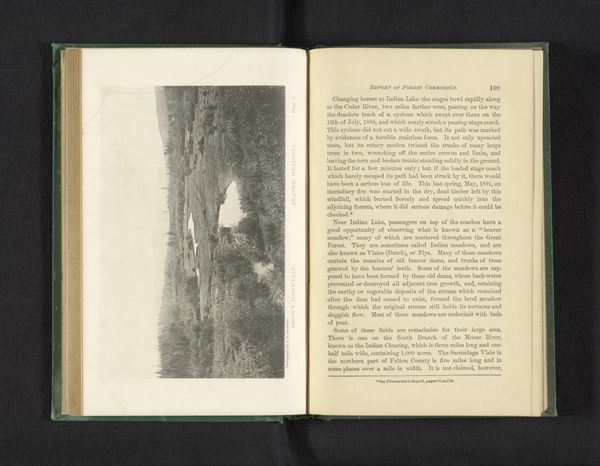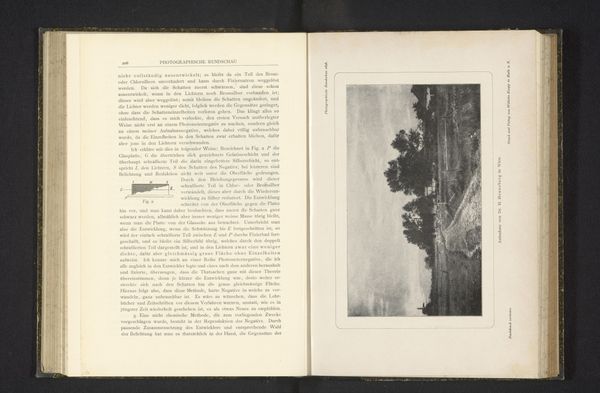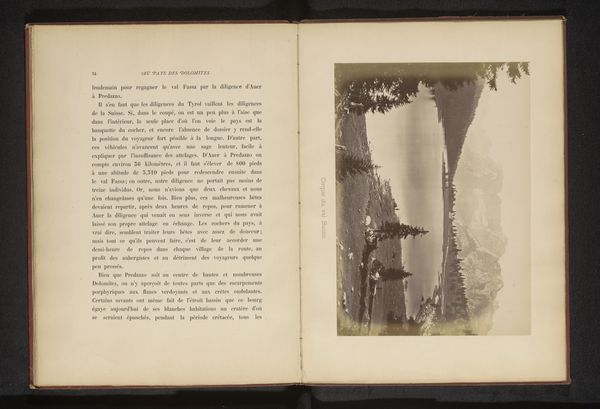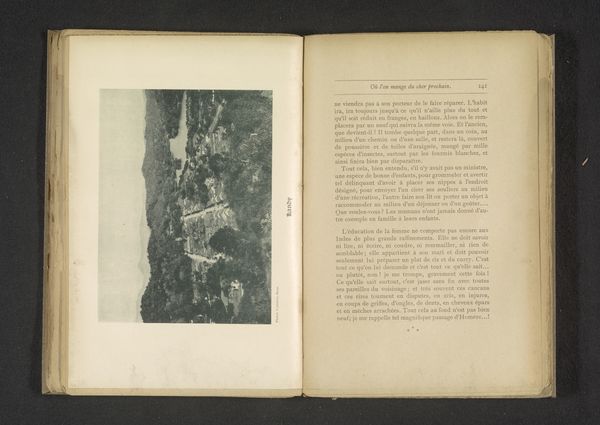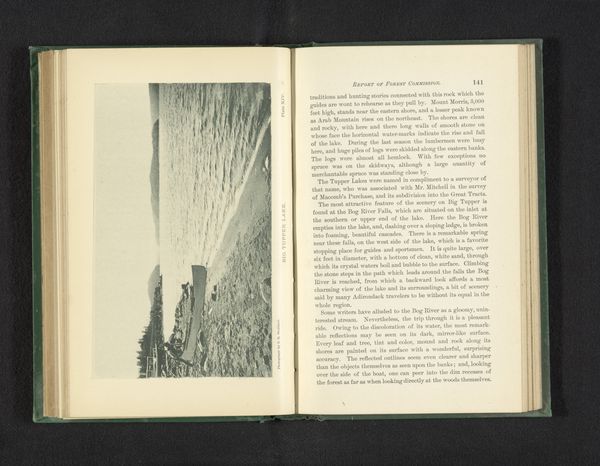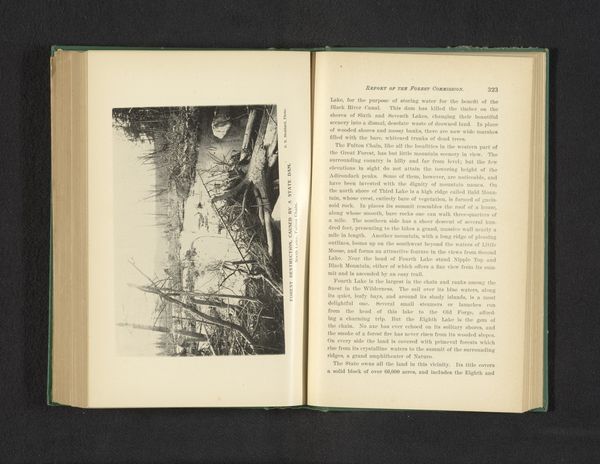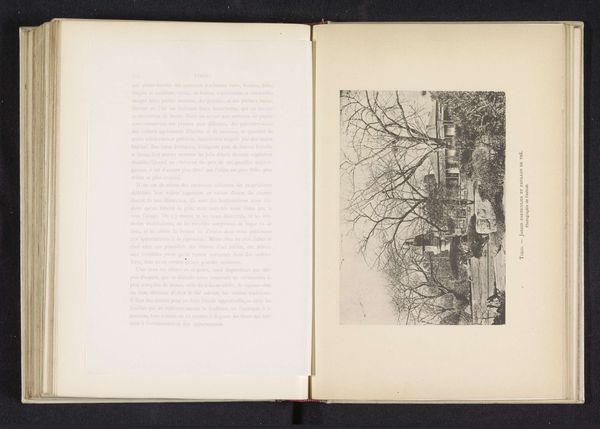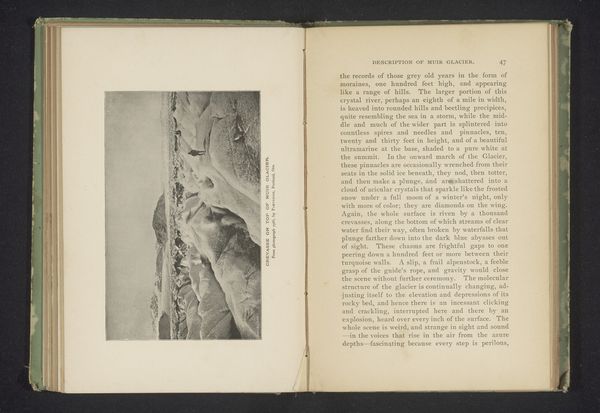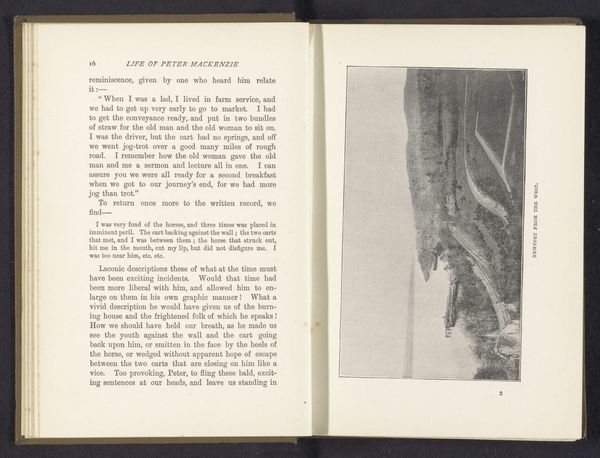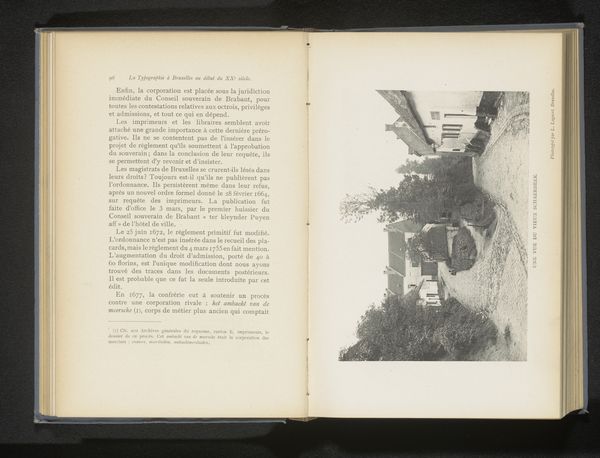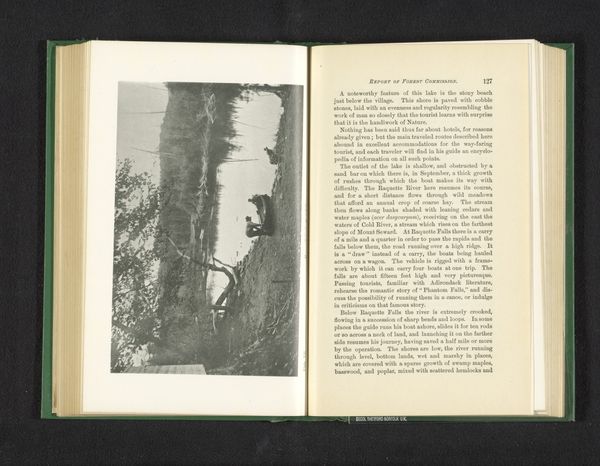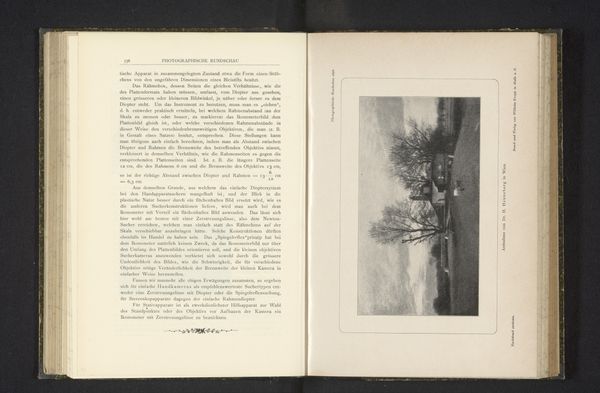
print, photography, gelatin-silver-print
# print
#
landscape
#
photography
#
gelatin-silver-print
Dimensions: height 88 mm, width 129 mm
Copyright: Rijks Museum: Open Domain
Curator: Here we have "Haytime," a gelatin-silver print by J.E. Thornton, dating from before 1899. The scene appears to be an idyllic snapshot of rural life. What are your immediate impressions? Editor: The tonal range feels subdued; it evokes a melancholic quiet, even though the scene is meant to represent summertime activity. The figures seem captured mid-labor, yet the atmosphere exudes serenity more than exertion. I wonder about the labor and skill that would go into making the silver gelatin itself in that period. Curator: Thornton's composition does lean toward pictorialism. He captures a certain mood of timeless tradition. The symbol of haymaking is interesting, and the work’s historical date—before 1899—carries associations of pre-industrial work, though captured with a relatively "modern" photographic medium. Editor: Exactly! The irony of using cutting-edge technology, at that time, to document and maybe even romanticize the simplicity of pre-mechanized agriculture intrigues me. How were these materials sourced? Gelatin itself has such loaded colonial ties as well. Curator: Right, that colonial dimension adds another layer. In considering this medium’s symbolism, we must look at the chemical process involved in its making—such a different relationship to image creation than contemporary digital photography. Also, the placement in the book with the accompanying information, serves to heighten its "educational" or instructional capacity. Editor: Good point! Context is everything. To see this photographic print reproduced and explained on the pages of a book allows a deeper insight into the production of knowledge about artistic creation at that time. What’s revealed versus what’s obscured through that choice? Curator: Yes, those contrasts make this piece fascinating, in this setting of historical documentation! I've thought differently about it because of our conversation today. Editor: Me too! Focusing on materiality certainly helps reveal those hidden narratives woven into this otherwise pastoral scene.
Comments
No comments
Be the first to comment and join the conversation on the ultimate creative platform.
